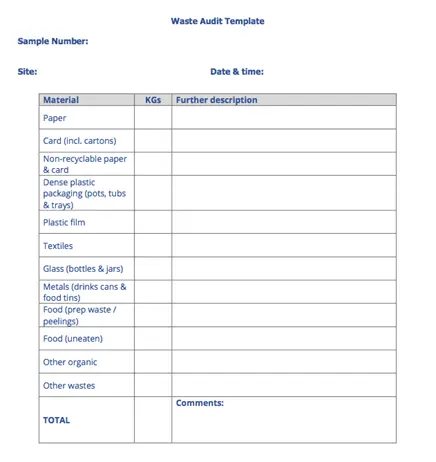Calculating the collection cost of waste from your Transport and Storage business
How to conduct a waste audit for the Transport and Storage sector
A waste audit is a hands-on review of the different types of waste your business produces. It can be conducted at a high level, for example reviewing all waste generated at one transport hub or building, or at a more detailed level, for example reviewing waste per department or area.
The idea of a waste audit is to identify where waste is generated in your organisation. With this knowledge, you can take steps to reduce it and ensure your workplace complies with legislation concerning waste handling, storage and disposal.
Undertaking a waste audit will help you to establish:
What types of waste your workplace produces
Where waste is generated in your workplace – whether for the whole building or for each department or process area
Who generates waste in your workplace
Once complete, you can then develop a waste action plan with your priorities and targets for reusing, recycling and recovering your waste.
Good to know
Your existing waste or recycling service provider, if you have one, may be better placed to undertake the audit process for you – especially if your waste may include items that could cause an injury, such as broken glass, sharps, clinical waste or potentially hazardous wastes.
To conduct your waste audit, start by downloading the Waste Audit template.

You will need:
Time and space to conduct your audit
A tarpaulin or plastic sheet to tip waste out onto for sorting
Appropriate (PPE) as identified via a (to protect you and your clothes)
Containers for sorting the waste into
Weighing equipment
A pen to record your findings
Your waste audit template
1. Conduct a risk assessment
You should produce a risk assessment before undertaking a waste audit to ensure that you’ve considered and mitigated all risks, such as those entailed by manual handling. Make sure everyone is properly briefed before starting the audit, including your Health and Safety officer or team, if you have one. If you don’t already have your own risk assessment template, the Health and Safety Executive has one here together with examples of completed risk assessments for various activities and workplaces.
Take extra care if your waste is likely to contain , or potentially .
2. Collect your waste
Gather waste from all your premises, such as head offices, distribution hubs, non-permanent locations such as welfare facilities, depots and warehouses, offices, staff break rooms, canteens and kitchens. Make sure you include general waste, all recyclables, kitchen waste and waste from bins, if applicable. Keep these materials separate from each other during your audit.
3. Sorting
Tip the waste onto your tarpaulin or plastic sheet and sort it into the different material types using your sorting containers. Use the waste audit template as a guide when deciding the number of different material types.
4. Measuring
Weigh each type of waste, remembering to deduct the weight of the container to arrive at the of the material.
5. Recording
Record the date, time and location of your audit and the weights of each material on your form.
6. Repeat twice
Where possible, it’s a good idea to repeat the audit (steps 2-5) twice more (three times altogether) and average your totals. This will provide a more accurate picture of the types and quantities of waste and recycling your organisation produces.
7. Calculate your results
Using the average net weight for each material, calculate your annual waste and recycling total, for example by multiplying by 52 if you have measured by the week.
Tips for carrying out your waste audit
Choose the right location and date(s) for your audit – the best time to undertake it will be the day before your waste is collected
Secure a suitable area for opening and containers and sorting the waste materials
Keep your audit dates secret so that employees won’t change their behaviour and skew your results, but make sure that cleaners and facilities staff know so they don’t empty the bins.